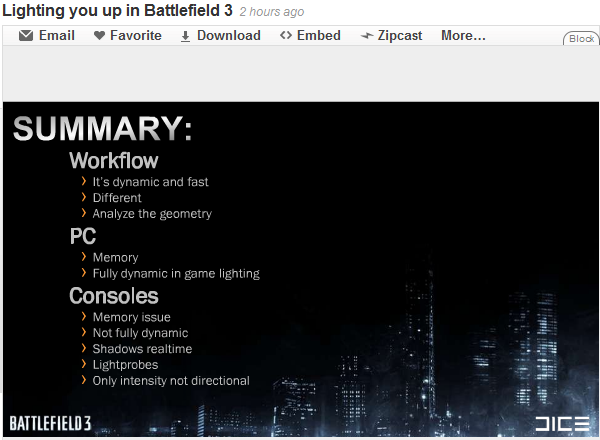I'm curious if you can give an insight into my question earlier in the thread, as to why shading was offloaded onto the SPUs rather than the other type of post-process graphical effects etc. that other games seem to be offloading instead.
Of course I'm just an outsider, but my impression is that other games that don't do fully deferred rendering would have trouble with the texture access part if they tried to shade on SPUs. Far too much data with totally random access - but if you go deferred, you have everything already stored in the G-buffer nice and tidy so it's a far more simple and predictable case. Still BF3 has several layers of splitting up tasks and optimizations so it's not that easy even this way.
The only reasonable comparison is with the Killzone 2/3 engine IMHO, but it appears that Guerilla has far too many other jobs for the SPUs to have enough processing time for the shading. Nevertheless it'd be an interesting in-depth discussion but I doubt anyone knowledgeable enough is up to it. Maybe Repi and some others did it aside some beers at GDC

